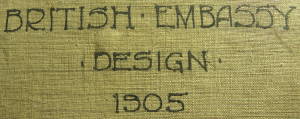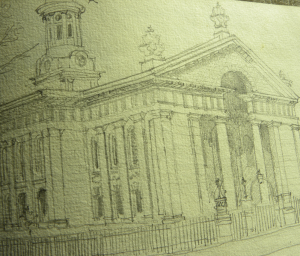Recently, a group of 13 sketch-books by the Scottish architect Charles Lovett Gill were acquired by the Centre for Research Collections (Special Collections) for Edinburgh University Library. Gill was notable for his long-term architectural partnership with Professor Sir Albert Edward Richardson (1880-1964).
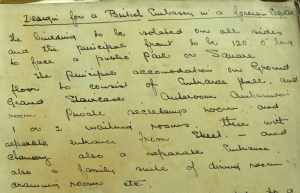
Notes about the ambition for the sketch-book ‘British Embassy design 1905’, by Charles Lovett Gill. Coll-1603.
Gill was born in 1880. He trained as an architect with E. G. Warren of Exeter, and he studied at the Royal Academy Schools. In 1904 he was the Ashpitel Prizeman (an annual architectural award in the name of Arthur Ashpitel) of the Royal Institute of British architects (RIBA), and he became an Associate of RIBA in 1905, and a Fellow in 1915 in recognition for his contribution to architecture in England.
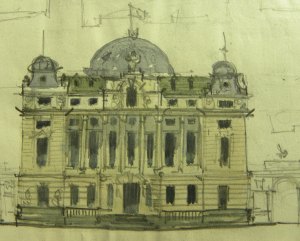
One of the edifices in the sketch-book ‘British Embassy Design 1905’ by Charles Lovett Gill. Coll-1603.
Gill started a practice in London in 1908 and did much work in central London. With Professor Sir Albert Richardson he was joint architect for the Duchy of Cornwall estate in Devon. The Richardson & Gill architectural partnership was eventually dissolved in 1939.
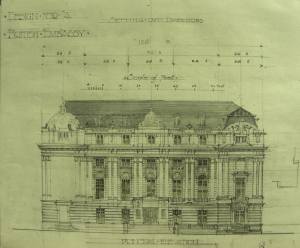
One of the edifices in the sketch-book ‘British Embassy Design 1905’ by Charles Lovett Gill. Coll-1603.
Gill presented a design in the competition for the rebuilding of the Regent Street Quadrant in London, and he was responsible for the facade of the then Regent Street Polytechnic (now part of University of Westminster). Much of his work was in the City of London where he designed Moorgate Hall, Finsbury Pavement and other buildings in Moorgate and elsewhere. Charles Lovett Gill died on 26 March 1960.
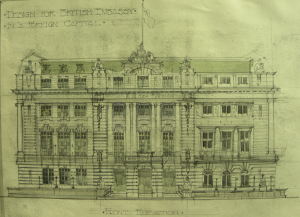
One of the edifices in the sketch-book ‘British Embassy Design 1905’ by Charles Lovett Gill. Coll-1603.
The recently acquired collection of Gill sketch-books contain pencil and watercolour tinted sketches of various places done between 1904 and 1941. One of the sketchbooks bound in linen is titled British Embassy Design 1905 and it may be a project set by his tutors. It contains sketches of a number of buildings in Paris and London with neatly finished elevations of a planned and very large Beaux-Arts edifice – a British Embassy in a foreign capital – that would dominate any chosen site. It was a grand building which, according to Gill’s notes in the sketch-book, was to ‘face a public park or square’.
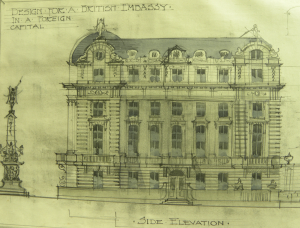
One of the edifices in the sketch-book ‘British Embassy Design 1905’ by Charles Lovett Gill. Coll-1603.
Other sketch-books contain drawings, sometimes colour tinted, of buildings and architectural features in Paris, London and in other parts of Britain.
Dr. Graeme D. Eddie, Assistant Librarian Archives & Manuscripts, Centre for Research Collections
